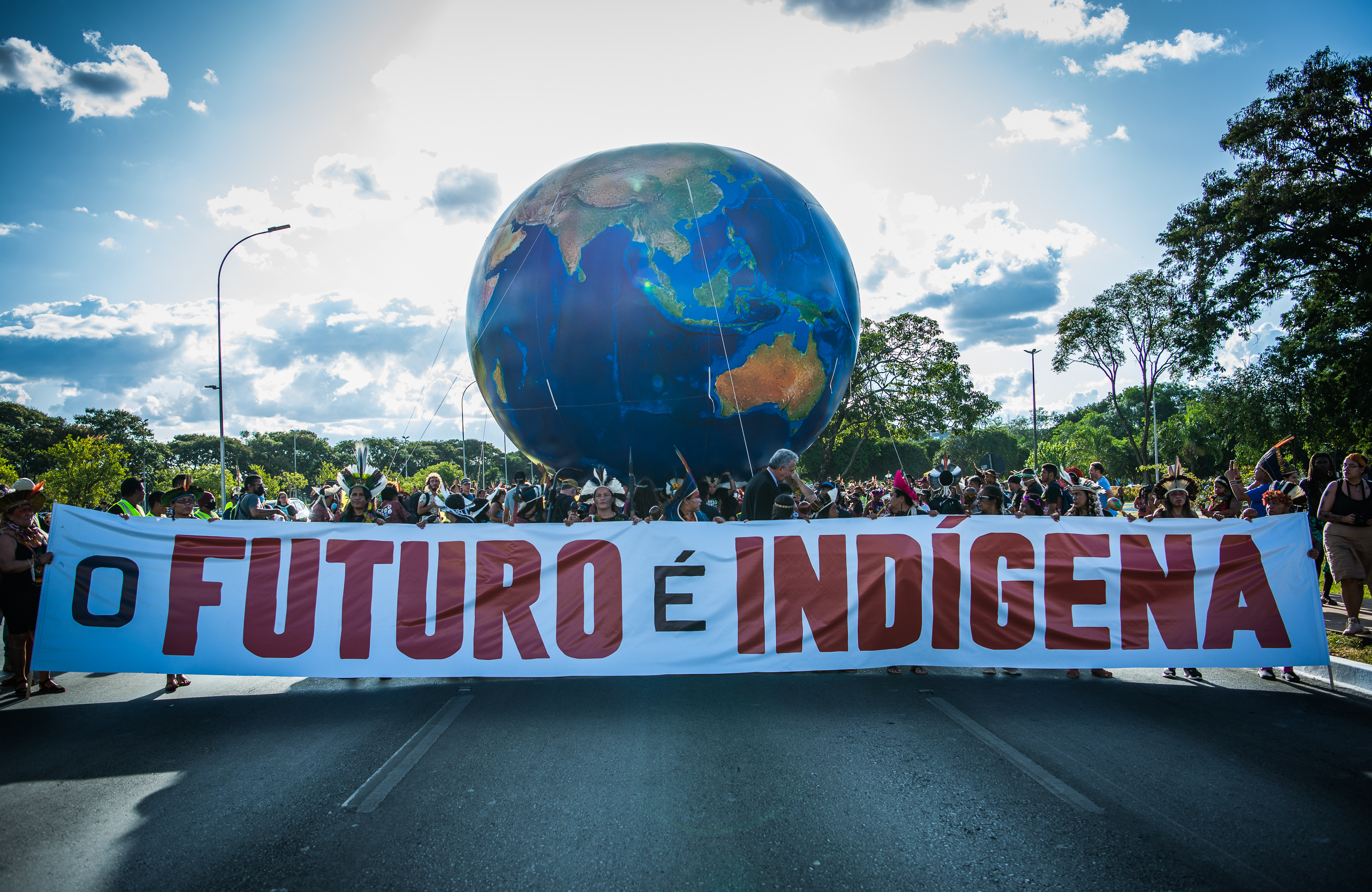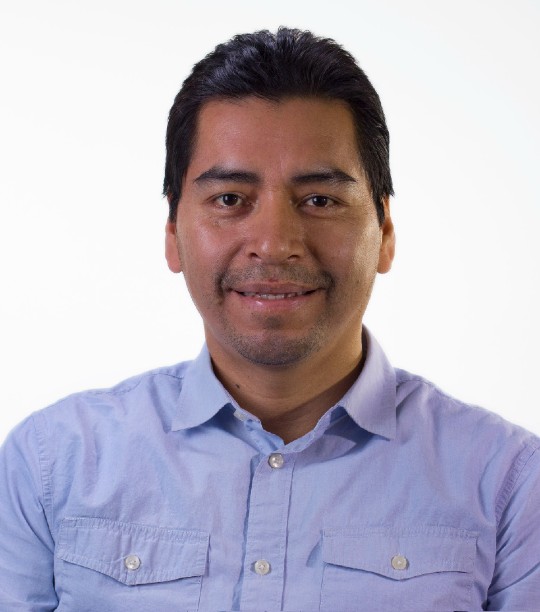Main menu
CEPF is a joint initiative of l’Agence Française de Développement, Conservation International, the European Union, Fondation Hans Wilsdorf, the Global Environment Facility, the Government of Japan and the World Bank.
Visitez le site français コア情報の日本語翻訳を読むOr use Google Translate to translate the English site to your language:
GTranslate
The New Global Biodiversity Framework and Indigenous Communities
An opportunity to align global goals with Indigenous peoples' priorities
By: Erika Ali
25 April 2023
25 April 2023
Johnson Cerda is a Kichwa native from the Ecuadorian Amazon and has been working with Conservation International for 14 years. He leads the World Bank funded Dedicated Grant Mechanism (DGM) for Indigenous Peoples and Local Communities within the Center for Conservation and Communities at Conservation International (CI). He has worked on climate change issues since 2000 and studied law and political science for international climate negotiation purposes.
“I enjoy doing this work especially for and with Indigenous peoples. We are very interested in connecting the work we do as a DGM with the outcomes from the 15th U.N. Conference of the Parties of the Convention on Biological Diversity (held in December 2022) as it relates to conserving biodiversity,” said Cerda.
CEPF Senior Communications Coordinator Erika Ali spoke with Johnson about the significance of the agreement that emerged from the conference—the Kunming-Montreal Agreement—and its new global biodiversity conservation goals and targets, agreed to by 196 countries.
The most important outcomes of the Kunming-Montreal Agreement for Indigenous peoples
“The '30 by 30' commitment of countries to protect 30% of land and oceans by 2030 is very important for biodiversity, but it is equally important to consider the implications of this goal for Indigenous peoples and their lands, rights and role in conservation,” said Cerda.
Under previous conservation agreements, Cerda said, Indigenous peoples had their authority over their own lands challenged as governments of individual countries tried to meet conservation goals through the establishment and expansion of protected areas.
“The idea is to have Indigenous peoples participate in meeting this 30% target by bringing a different perspective on what achieving that target entails while contributing to the same overall goal.”
Cerda also mentions the commitment and allocation of resources—namely financial resources—to protect biodiversity as another important outcome of the agreement. “The Indigenous and local communities are saying that it is important for these resources to flow into the communities and not just remain at the top with the big organizations.”
Cerda lists the recognition of the full and equitable participation of Indigenous peoples working in conservation as yet another valuable outcome of the agreement: “It is good to have clear and deliberate language on this where there was none before.”
Building local capacity for conservation
“In 2015,” Cerda recalled, “Norway had US$200 million they wanted to give to Indigenous peoples, but they said they wanted to see that these communities had the necessary capacity to receive the funding first.”
A lot of that funding ultimately ended up going to big organizations for redistribution, Cerda said, due to concerns about the Indigenous communities' capacity to manage large grants. “We realized from our experience in the communities that perhaps we are not ready to handle such a large amount of funding ourselves, which is why we tend to receive smaller grants like US$5,000 or US$20,000. So, the question is: Do the Indigenous and local communities need to increase our capacity to receive money, or do we need to rely on a trusted partner organization to help us manage the funding?”
Cerda says that in his experience working with the DGM, he has seen that international non-governmental organizations (NGOs) often provide technical support to Indigenous peoples to help them make decisions and implement conservation projects in the field. “And it’s working,” said Cerda. “We see that it is working. But what we are also seeing is these communities saying that they would like to receive the money themselves without going through these institutions.”
“If there is to be any meaningful progress towards these new conservation goals, a bigger cut of funding needs to make its way to the indigenous and local communities to aid them in conservation efforts,” said Cerda. This is where organizations like CI and CEPF play an important role, Cerda said—in partnering with Indigenous peoples and local communities to develop the foundation necessary for successful management of large grants.
Aligning priorities
Cerda identified another issue with donors giving funds to other big organizations and networks for them to then distribute to smaller organizations and local communities. “The problem with this approach is that oftentimes the priorities of these organizations and the priorities of the communities are not necessarily aligned.”
For example, Indigenous and local communities often do not work on one very specific issue, such as the conservation of a particular species. Cerda recounted his experience working on REDD+ projects in Peru where aligning the interests of local communities and donors early on in the project would have saved a lot of time and frustration for everyone involved. “The donors were saying that the money was to be used for protecting the forests, but the communities wanted to see how training on REDD+ and forest conservation would benefit their schools and health systems and allow them to take care of their people while taking care of the forest.”
Donors often look at a single issue, he said, whereas communities take a more holistic approach to conservation. One possible solution to this misalignment, according to Cerda, is to create a space where representatives from donors and local communities can come together to discuss their respective priorities.
Respecting the rights and needs of Indigenous peoples and local communities
Cerda points out that the new "30 by '30" goal from the Kunming-Montreal Agreement may exacerbate the disconnect between donors and local communities if communication is not clear.
“The concern we see from Indigenous peoples is that these countries and organizations want to create protected areas within our lands, but limit access to those areas and their resources in the process— resources we need to feed our communities and build our homes. Communities have so much to share about their own practices and knowledge, and oftentimes I don’t see opportunities being created for us to share that knowledge. It’s more that these organizations come in and tell us what needs to be done, rather than create space for exchanging ideas.”
It is important to listen to these communities, learn from the valuable work they are already doing, and enhance and expand their ability to do that work as equal partners in the ongoing effort to conserve biodiversity, Cerda said.






